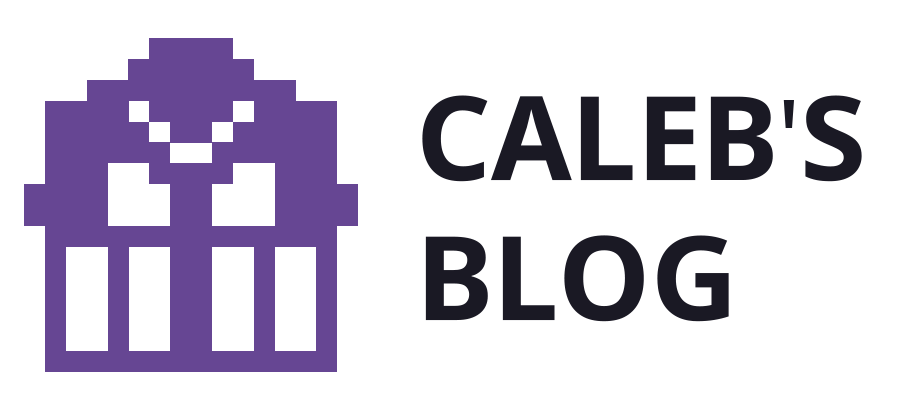In late February 2018, I inoculated three mycelial networks that eventually grew into the block you see here.
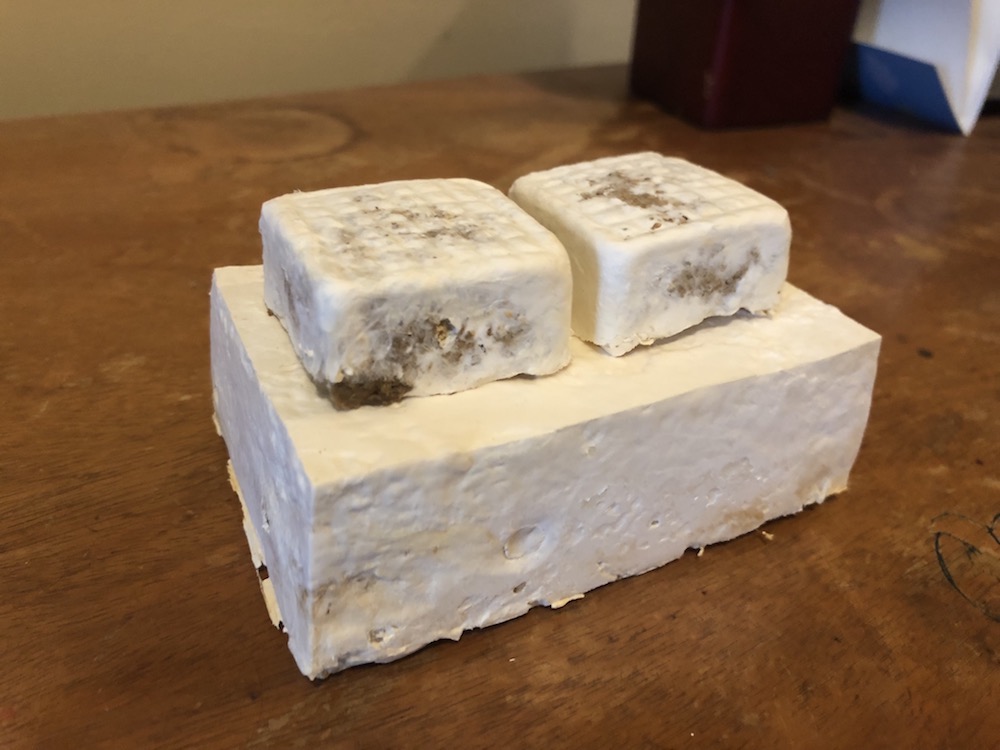
This post shows the progress of the mycelium, which grew in two separate containers.

The mycelium were grown in the boxes seen below – on the left, a simple soap container from muji (also used for this project), and on the right, a shiny little green metal box with two compartments.
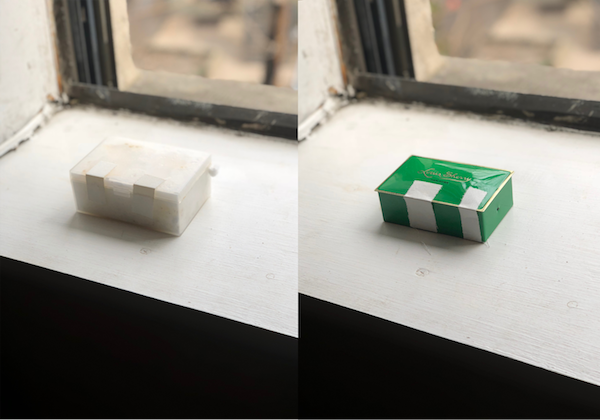
Inoculation
These two containers of mycelium (oyster mushroom) were inoculated in a workshop of the the fungus among us class. We used coffee chaff as substrate – the material the fungus would grow on.

When the mushroom spawn are young and weak, they can easily be killed or taken over by bacteria and other “bad” fungii. To prevent this from happening, we:
- Sterilized the containers we used with alcohol
- Pasteurized the substrate to remove some bacteria
- Used gloves and tarps to prevent unnecessary foreign surface contact
We then combined the spawn and substrate and packed the resulting concoction into our containers, and sealed them up.

As you can see, the container starts off with mostly brown material inside of it. The containers were placed in a dark area and left for weeks at a time.
Growth
Each week, the mycelia inside the muji container grew:
…and after a few weeks, I opened the green container – happy to see it had been filled as well!
Maturity
Box A: the muji box
Until April 4, the muji box had remained sealed. It perpetually retained a bit of moisture trapped inside:

After seeing the insane growth stop, it was high time to release the seals. This is what it looked like on April 4th:
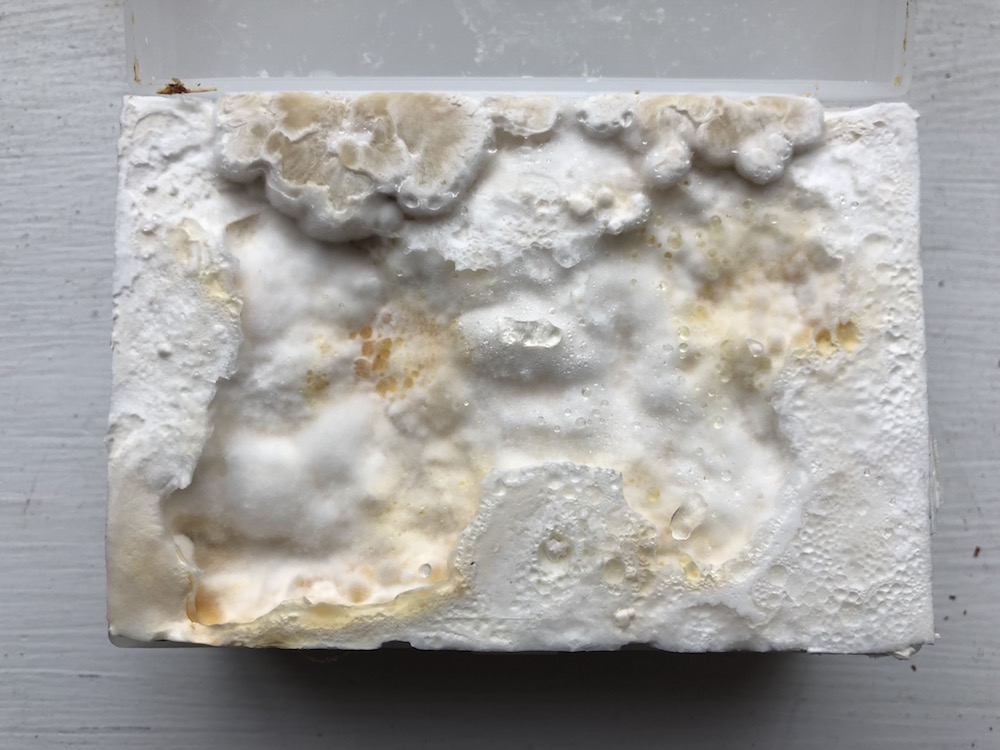
Cool right? After opening it, I kept the lid closed without the tape sealed for one week, to see if the fungus would push itself out of the container as it grew.
However, after waiting a week it was clear the fungus would not break through – so the container was left open at the top. Once more fully exposed, the fungal block began to dry, shrivel, and brown.

The process continued for over a month. 3 weeks later:

The shriveling and browning continued at a slower pace as time progressed. 1 more month after that, the difference was not-so-striking:

At this point, I decided to remove the mycelium from the container, and see what the rest of it looked like:
The block feels like styrofoam – it is very light, but durable, with that same hollow feeling and sound. It really does not feel like a mushroom anymore. It is dry and hard. Perhaps it is dead… Some additional glamour shots:
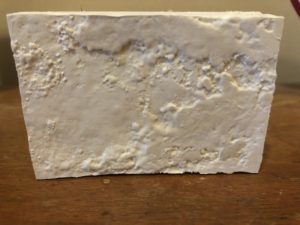
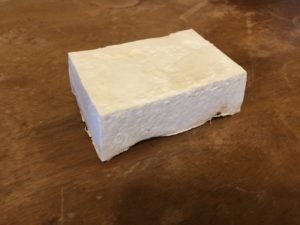
Box B: the shiny green box
After removing the tape seals from both boxes, the mycelium in the shiny green boxes dried out more quickly because the container’s seals were not as air-tight:

Interestingly, some mycelium stuck to the top when opened, leaving another area for us to inspect.

Yet the story was the same here – the fungus in this container shriveled as well. Here is what it looked like after 1 month:

and again, about a month later, not much change.

Here is what this containers’ fungus looked like:
These two didn’t feel as solid as the large block, but generally had the same qualities. Some additional glamour shots:
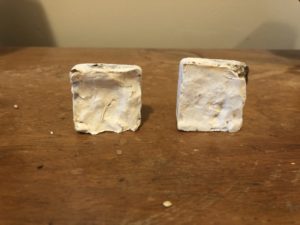
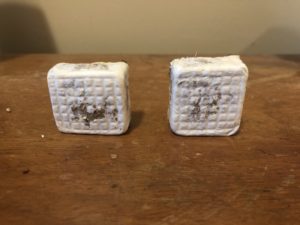
Retirement
5 months after being inoculated, it was clear these ‘shrooms needed a new home. I placed them under a tree in the garden of the Wyckoff House Museum, a a preseved 1.5 acre area in East Brooklyn.

What is the Wyckoff House Museum? From their website:
The Wyckoff House Museum preserves, interprets, and operates New York City’s oldest building and the surrounding one-and-a-half acres of park. Through innovative educational and farm-based programs we build cultural and agricultural connections within our community, emphasizing immigration, family, food, and community through history.
These agricultural connections are what inspired me to retire the experiment in this place. The 3 mycelium blocks were placed under a tree in the back – hopefully they will integrate into the environment and help sustain life in the beautiful garden… but for now, they’re looking pretty out of place 😅

Goodbye dear fungal blocks! Let us pray they integrate into the environment 🙏. I will update this post if any new developments occur.
